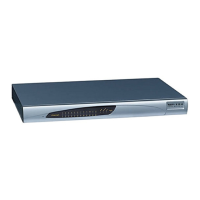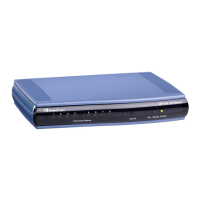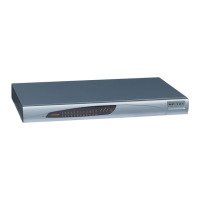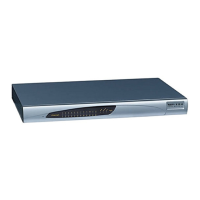-law:
When this parameter is set to 1, 2, or 3, the parameter
FaxTransportMode is ignored.
'a=gpmd:0 vbd=yes;ecan=on'
When the value of this parameter is other than 1, T.38
might still be used without the control protocol's
involvement. To completely disable T.38, set
FaxTransportMode to a value other than 1.
For detailed information on fax transport methods, refer
to ''Fax/Modem Transport Modes'' 396 on page .
SIP Transport Type Determines the default transport layer for outgoing SIP
calls initiated by the device.
[SIPTransportType]
[0]
UDP (default)
[1]
TCP
[2] TLS (SIPS)
Notes:
It's recommended to use TLS for communication with a
SIP Proxy and not for direct device-to-device
communication.
For received calls (i.e., incoming), the device accepts all
these protocols.
The value of this parameter is also used by the SAS
application as the default transport layer for outgoing
SIP calls.
SIP UDP Local Port
Local UDP port for SIP messages.
The valid range is 1 to 65534. The default value is 5060.
[LocalSIPPort]
SIP TCP Local Port Local TCP port for SIP messages.
The valid range is 1 to 65535. The default value is 5060.
[TCPLocalSIPPort]
SIP TLS Local Port Local TLS port for SIP messages.
The valid range is 1 to 65535. The default value is 5061.
[TLSLocalSIPPort]
Note:
Web/EMS: Enable SIPS
The value of must be different than the value of 'SIP
TCP Local Port' (TCPLocalSIPPort).
Enables secured SIP (SIPS URI) connections over multiple
hops.
[EnableSIPS]
[0]
Disable (default).
[1]
When 'SIP Transport Type' is set to TLS
(SIPTransportType = 2) and 'Enable SIPS' is disabled, TLS
is used for the next network hop only. When 'SIP Transport
Type' is set to TCP or TLS (SIPTransportType = 2 or 1) and
'Enable SIPS' is enabled, TLS is used through the entire
connection (over multiple hops).
Enable.
Note:
If this parameter is enabled and 'SIP Transport Type'
is set to UDP (SIPTransportType = 0), the connection fails.

